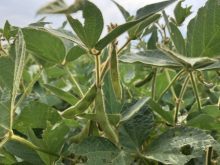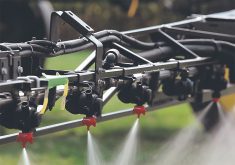Winnipeg reporter Ed White attended the North American Agricultural Journalists meeting in Washington, D.C., last week, and used his time there to check on the pulse of American agriculture.
WASHINGTON, D.C. — Canadian farmers might have felt blindsided when U.S. President Donald Trump suddenly accused Canada’s dairy farming system of “taking advantage” of U.S. dairy farmers and being a “disgrace.”
However, it was just a very public symptom of a U.S. farm sector in crisis and part of nationwide concern about a supply glut that is devastating U.S. dairy farmer incomes.
Read Also

No special crop fireworks expected
farmers should not expect fireworks in the special crops market due to ample supplies.
Fortunately for Canadian dairy farmers and other farmers worried about being nailed by retaliatory U.S. trade action, there is scant sign that American farm groups and farm-connected politicians share Trump’s focus on Canada as a cause or solution to the current U.S. dairy crisis.
“We don’t have an easy answer or a silver bullet,” Trump’s White House agriculture adviser, Ray Starling, told North American Agricultural Journalists members April 24 during a meeting in Washington.
“We are anxious to sit down and work with the industry.”
That sense of no-easy-answer to dairy farmers’ woes was shared by the leaders of the House of Representatives and Senate agriculture committees, as well as by policy officials of the right-of-centre American Farm Bureau Federation and the left-of-centre National Farmers Union.
“For us, oversupply is the problem,” Zach Clark of the NFU told NAAJ. “We see supply as a problem and some sort of restraint of production as a solution.”
Clark described the Canadian dairy system’s recent reclassification of some industrial milk products as “unfair” and said the NFU wants to see the previous pricing regime reinstated.
However, he noted that his organization doesn’t blame Canada for “trying to protect its producers” and would like to see the U.S. create a supply management system, too.
Mary Kay Thatcher of the farm bureau federation said her organization wants to see Canada’s dairy pricing move investigated to see if a World Trade Organization complaint could be made, but “we’re not sure there’s been breach at this point.”
Her organization’s focus is on seeing whether current U.S. dairy support programs can be tweaked to provide better support, and on getting good programs into the 2018 farm bill. Domestic supply and demand issues are the farm bureau’s main concern.
Trump’s attack on Canadian dairy pricing came during a trip to Wisconsin April 20, where 75 dairy farmers had recently been told that they were not going to be able to supply a nearby dairy plant be-cause of Canada’s changes, which killed the demand for the American product.
Ultrafiltered milk has flowed into Canada without the country’s high import tariffs and strict controls because the product did not exist when supply management’s exemption from NAFTA was written. Because it was not banned, it could be imported by Canadian processors and used in place of much more expensive Canadian dairy products.
However, some Canadian provincial dairy organizations have begun instituting market prices for industrial dairy products, with Ontario establishing a framework that many others are beginning to emulate. With equally cheap product available within Canada, Canadian processors have largely lost any incentive to import U.S. product, leading to problems like those experienced in Wisconsin.
While Trump’s attack on Canadian dairy garnered a lot of headlines and attention in mainstream newspapers and TV news programs on both sides of the border, the Canadian element was scarcely mentioned by American agriculture committee members who met with NAAJ.
Democrat Collin Peterson, minority leader of the House of Representatives agriculture committee and a strong and consistent critic of Canada’s supply management system for decades, did not mention Canada in 20 minutes of comments, many focused on the dairy crisis, only discussing supply management when asked a direct question about it.
His main concern has been finding a way to fix the dairy farmer safety net program and convincing farmers to actually use what they are offered.
The U.S. dairy industry’s woes are part of a worldwide glut of dairy products, exacerbated by production growth by large, vertically integrated producers servicing a stagnant domestic market. Surpluses have been exported to relieve domestic supply pressures, but world prices are low.
The milk products exported to Canada were part of that relief flow, so losing that market increases the U.S. domestic supply pressures.
However, Clark said he thinks the U.S. needs to retreat from a reliance on exports to relieve the pressure because the world market doesn’t offer a long-term solution.
Canada’s dairy action highlights the oversupply problem, but isn’t its cause or solution.
“It sort of brought into contrast the sort of problem dairy producers face in that they are relying completely on international market growth in order to keep prices stable, to keep the farmers intact,” said Clark. “We see Canada as part of the problem, (but) we appreciate that Canada is trying to protect its producers and we understand that if there was more of that sentiment here in the U.S. instead of the reliance on trade, (dairy farmers wouldn’t be in crisis).”
















